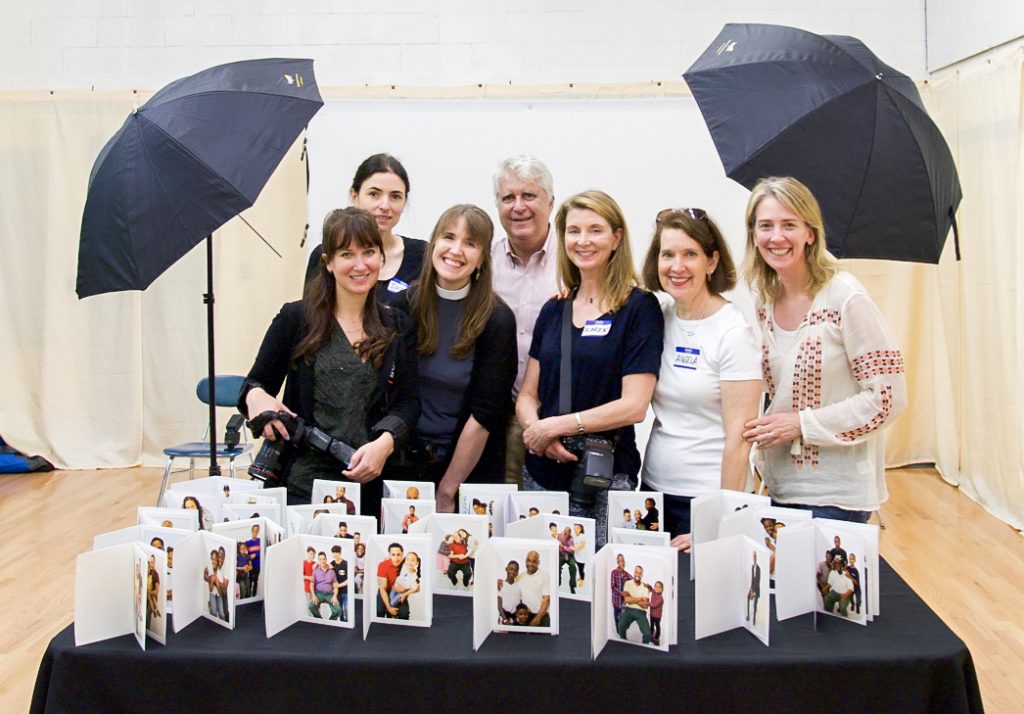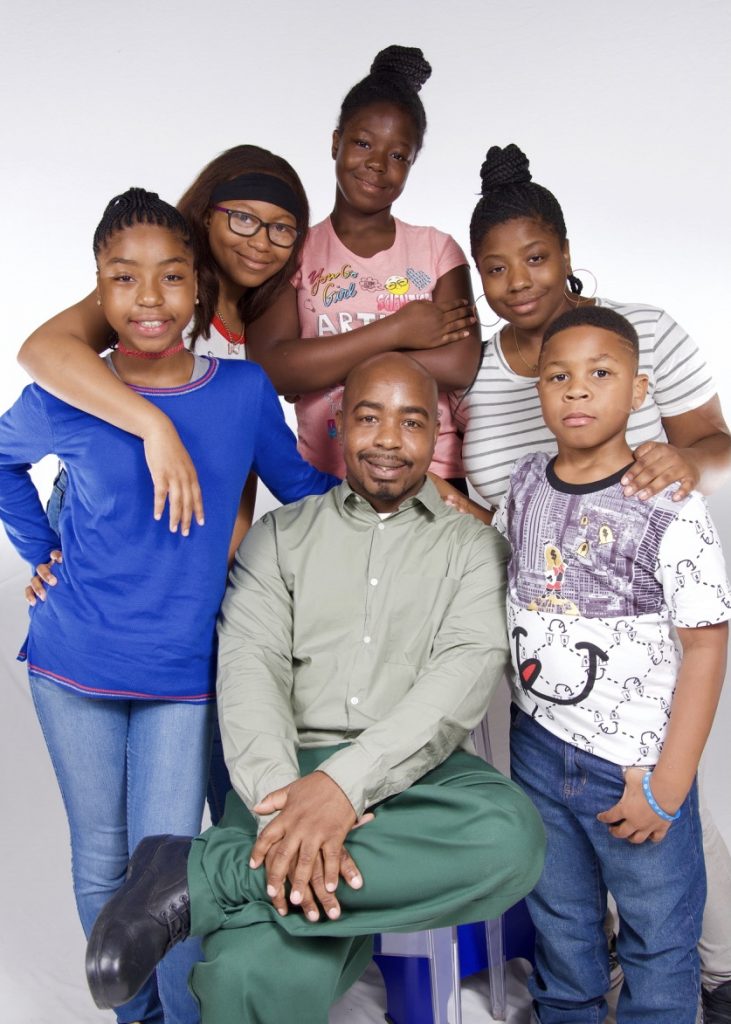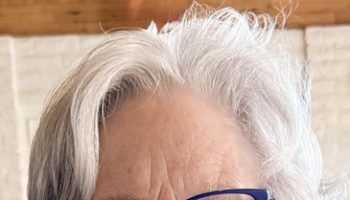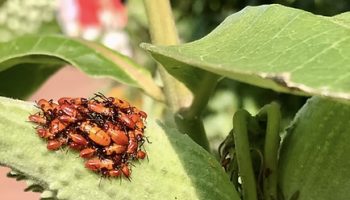

Deborah Trefts
Staff Writer
Some of the highest recidivism rates in the world occur in the United States, where state reporting of data is optional. Three indicators are tracked in determining the rate for each participating state: percent arrested, percent reconvicted and percent reincarcerated.
The three-year recidivism rate in New York State for 2018 was 43%, according to World Population Review. In 2024, however, it was 31.6% — a decrease of 11.4% in six years.
A number of nonprofit organizations and many individuals in New York are among those who have been striving to reduce recidivism. Portrait, event and freelance photographer Angela James is one such person.
For the Chautauqua Women’s Club and its Chautauqua Speaks series, at 9:15 a.m. Tuesday in the CWC House, James will give a presentation titled “Portraits of Reconciliation.”
New York “had 54 prisons in 2019, and now we have 42 actual prisons,” James said. “Seventy-seven thousand men and women were incarcerated in 1999, the highpoint. Now, we have 32,000. … Recidivism is improving. Programs in prison are helping people come out.”
Fr. Greg Boyle spoke about James’ ministry in his season-opening sermon on June 23, 2024, saying in part, “They walk away feeling favored; nothing can touch them,” wrote Mary Lee Talbot in The Chautauquan Daily the following day.
“The mug shot is the common element going into incarceration,” James said. “You are being screamed at and disgraced. … My whole goal is creating the polar opposite of a mug shot.”
The youngest of eight siblings and five sisters, James grew up on the eastern side of greater Cleveland. She majored in communications (which included “a lot of literature”) and French at the University of Dayton, a private research university in Dayton, Ohio.
“I kind of fell in love with the corporate world,” she said about landing her first job at Procter & Gamble in Cincinnati. “I traveled across the country doing product introductions and then was at headquarters. It was kind of like an MBA.”
One of James’ friends at P&G was Chautauquan Sandra Clifford. “Sandra started waxing poetic about this place,” she said. “My husband also worked for P&G. Our first weekend here, at Sandra’s, was poetic. Then (we returned) for one week, then longer. … We bought (our) house in 2004.”
Spending full seasons at Chautauqua Institution led to James becoming a member of the Chautauqua Foundation Board of Directors and Bird, Tree & Garden Club president.

For 17 years, after she left P&G in 1988 and married Bill James, the couple lived in Washington D.C. When Bill became head of European Sales for IRI (Information Resources, Inc.), she said they moved to London with their 11-, 14- and 16-year-old children in 2007.
“It was awesome,” James said. “We all had a great time. … It was an adventure. We were typical expats (living in) St. John’s Wood,” where they remained for seven years.
The expat experience included travel outside of the United Kingdom. So at the London School of Photography, she took courses in 2008 and 2009.
“If you’re only there for one year, you travel,” James said. “Our first trip was to Egypt, and our second was to Rome and Paris. … We decided, ‘Let’s go to Africa. One of us has to use this camera.’ I did. It was hard work. I was falling in love with portrait work of the water buffalo.”
Back in England, James said she organized photo workshops for expats.
“Here we are, in London, going on great trips,” she said. “Let’s learn how to use our expensive cameras beyond auto. Helping other people learn was a lot of fun. You’ve got three kids, and two peel off for college (in the United States). You have to reinvent yourself.”
When the Jameses moved to New York City in 2014, she completed more coursework at the International Center for Photography.
“I took real subject matter courses that have proven to be extremely valuable with what I do now,” she said.
After “Bill and I moved back from London, we were going back and forth, and we had a church in London and a church in New York,” she said, and the Jameses’ church in New York was entering into some outreach work in the state’s prison system. “The night after we got back, the church rectory was (hosting) an evening with the N.Y. prison system, Department of Corrections, mayor’s office, felon-friendly employers … the critical step of housing, parole. We were jet-lagged. I said, ‘Let’s go!’ ”
One of the people whom James met at church “was planning an all-day (event) in Harlem with lunch,” she said. “(It included helping people with) resumes, dress for success, welcoming men and women home by meeting them with what they need.”
James was told she could hep with lunch, or at the registration table or distributing information packets. She thought differently.
“I’m not doing any of that,” she said. “Think of your little kid on their first day of school carrying a backpack with lunch. They have so much hope. That’s what I wanted for prisoners who are just out.”
Among the items she said she took with her to this Harlem job fair in order to create a “pop-up portrait studio” were a white drop, camera, light, printer from home with printer paper and 33-cent cardstock frames for photos.
“The genesis, that event, just mushroomed into going to events inside prisons — graduations, Cardinal Dolan blessing the prison, the bishop of New York washing men’s feet on Monday and Thursday, Celebrate your Children (program),” she said.
Eventually, “instead of cardstock, I started sending them digital photos,” James said. “It’s something they can email out to people. (Over) 10 years, I’ve streamlined my gear.”
“It all changed, early on in 2015, when I got a call from Albany, and the Department of Corrections wanted in on it,” she continued. “The DOCCS — DOC Community Supervision — launched a program to help men reestablish themselves as the father of the household.” These were men who had never had a role model, James said; “this is part of giving them tools for how to exist in the world.”
Deciding “to become part of their team was months in the making,” she said. The work included working with mothers on the outside, who had been caring for their children alone and who would now have the children’s father back in the picture. The entire program “culminates with a four-to-five hour celebration at the prison.”
“What I started all around Harlem, that’s what DOCCS was interested in,” she said. “Now, if there’s an event going on at one of the prisons, DOC will call. I travel the state. … I don’t do gangster photography. I don’t reinforce negative stereotypes. It’s a joy to help them see themselves as beautiful as they are.”
James “provides returning citizens coming home from prison with the experience of a professional photo shoot and a free printed or digital head shot to be used in support of their new life.” With “a wide range of outstanding nonprofits and agencies supporting people returning from incarceration,” she “schedules ‘Welcome Home’ headshots … (and) photos for the DOCCS father/child reunion program, Celebrate Your Children.”
In addition, she covers “parole summits, college graduation, holiday shoots, religious services, certificate events and programs where people in prison are recognized.”
In New York State, there are three women’s prisons. James said that every month she travels to two of them with her pop-up studio.
“There’s an ecosystem in the prison system that’s as deep as Chautauqua’s, but different,” James said. “I have some sort of an impact, and this is the journey I’ve been involved in for 10 years. Everyone can be involved. … I’m constantly bringing people into prisons, … so they can see firsthand. … I usually visit facilities in Western New York in the summer.”




